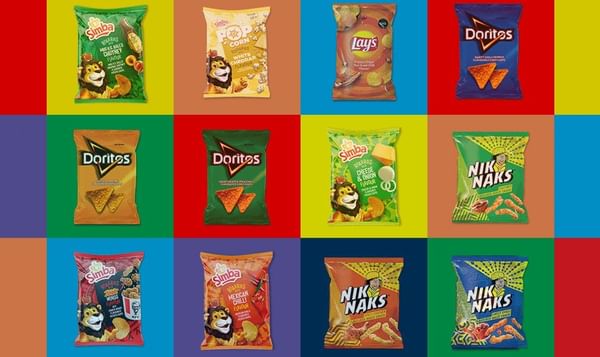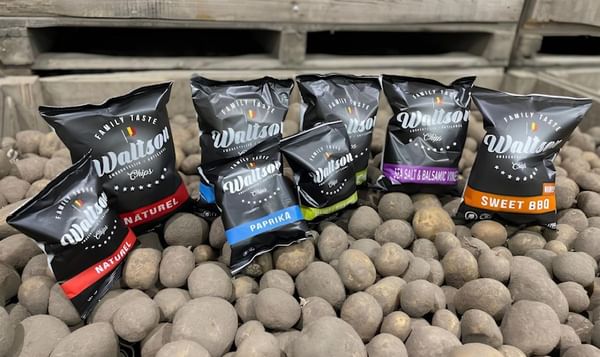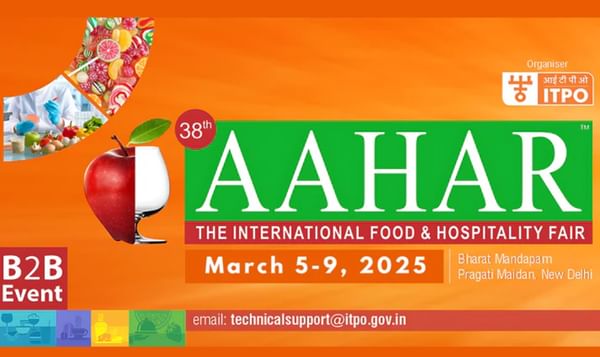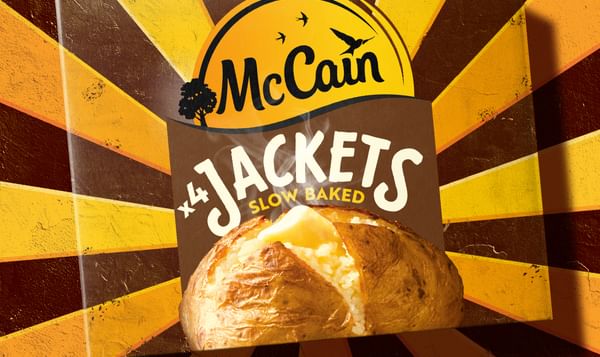Sanjay Ghodawat Group to enter Indian snack market with Star555
Sanjay Ghodawat Group to enter Indian snack market with Star555

The Kolhapur-based Sanjay Ghodawat Group, which has interests in a number of sectors including fast-moving consumer goods (FMCG), will soon foray into the food and beverage market with the launch of the snack brand, Star555. In an e-mail interaction with Harcha Bhaskar, Shrenik Ghodawat, the group’s director, spoke about the brand and the range of products the company plans to launch, the investments made by it and its expansion plans.
Excerpts:
What are the reasons for taking the decision to enter the snack category?
Would the new venture be partnership-based or a solo venture?
Sanjay Ghodawat Group is one of the players in the Indian FMCG industry, with such products as edible oil and iodised salt.
It has already been working for multinational companies as a contract manufacturer of snacks like namkeen, potato chips and extrusions, and brands such as Kurkure.
Snacking has changed drastically across India, which loves snacking. Over the past two decades, snacks have found high acceptance in both large and small cities to become the preferred choice of consumers.
Mapping this phenomenal change and demand in India, the group decided to enter this segment. As we already have a good platform in the FMCG segment and a strong distribution network, it was natural that we would launch our own brand, Star555. The new venture is being launched as a subsidiary of Sanjay Ghodawat Group, and is a solo venture.
Which are the various snacks and variants that you plan to launch? What are the various raw materials used, and from where are they procured?
To start with, we would launch 10 variants of namkeen, potato chips and extrusions. The products that would be launched are: Namkeen, namely Aloo Bhujia, Mater Masti, Sing Bhujia, Moong Dal and Spicy Mix; Extrusions, namely Masala Star Twist and Tomato Twist (which would be launched under the brand name Fataake), and Potato chips with a seasoning of salt, masala and tomato
The basic raw materials used include potatoes, refined edible oil, multi-grains, salt, seasoning, rice grit, corn greet, gram grit and groundnut.
The modus operandi of vendors and suppliers of raw materials is already being employed by the group, as we have been in this business for a while through our company, Excelus Star Foodbev Pvt Ltd.
Where is the processing done, and what is the capacity of the plant? Is the technology imported or indigenous?
The processing is done in our plant, Excelus Star Foodbev Pvt Ltd, which is situated at Chipri, Jaysingpur in Kolhapur district.
It is located approximately 420km from Mumbai and 250km from Pune. The plant capacity is approximately 750 metric tonne per month, and is equipped with both imported and indigenous machineries.
In which Indian states would the product be available?
The central location of the plant plays a vital role in demarcating the states. In the first phase, Maharashtra, Goa and Karnataka would be the initial markets for the product.
In the second phase, the group plans to enter Andhra Pradesh, Madhya Pradesh and Gujarat.
What are the trends taking place in snacks, with regard to product innovations and consumer preferences?
The general trend in the market is to consume hygienically-packed snacks. Over the coming years, the snack food market would become regional in the taste attributes.
Keeping this in mind, the group has its own research and development (R&D) department which is engaged in innovation and new product development.
The basis of research would always be to study the consumption trends, and then introduce more products to fulfill the demands of consumer across all regions in India.
What are the price points for your products? In what pack sizes would they be available in the market?
We are entering the market with the maximum retail price (MRP) of Rs 5 per unit. Different products would be available in the range of 16-25g, depending on the variety.
What would be the unique selling proposition (USP) of your products? After snacks, any other sector you would be venturing into?
As stated earlier, we would be focussing on making our snack food regionalised as per the taste and demand of our consumers. Over and above this, our snacks are rich in vitamins and proteins.
Besides the launch of our snack range, we are also in the final stages to launch our packaged drinking water brand, Star Gold.
We have also finalised the setting up of a rice mill with a capacity of eight million tonne per hour. This, in turn, would help us launch our rice brand as well.
How big is the snack market in India? At what rate it is growing?
The branded salty snacks market has come a long way since the 1990s, when the market was dominated by the large players and a few other regional brands.
The market registered a major leap in the mid-90s and post-2005, many other players entered this segment.
At present, the Indian branded salted snacks market is estimated to be worth Rs 10,000 crore ($1.68 billion), and is projected to grow at a compound annual growth rate (CAGR) of 15-18 per cent over the next few years.
As a new venture in snacks, what challenges did you face with regards to regulations, procurement, manpower and transportation?
The group believes that each coin has two sides. The market is a competitive battleground, where the consumers are the spectators.
Due to our already-existing set-up within the group, the challenges were limited to product development and distribution.
Both these challenges have already been taken care of, and now our focus is completely on the product launch.
Excerpts:
What are the reasons for taking the decision to enter the snack category?
Would the new venture be partnership-based or a solo venture?
Sanjay Ghodawat Group is one of the players in the Indian FMCG industry, with such products as edible oil and iodised salt.
It has already been working for multinational companies as a contract manufacturer of snacks like namkeen, potato chips and extrusions, and brands such as Kurkure.
Snacking has changed drastically across India, which loves snacking. Over the past two decades, snacks have found high acceptance in both large and small cities to become the preferred choice of consumers.
Mapping this phenomenal change and demand in India, the group decided to enter this segment. As we already have a good platform in the FMCG segment and a strong distribution network, it was natural that we would launch our own brand, Star555. The new venture is being launched as a subsidiary of Sanjay Ghodawat Group, and is a solo venture.
Which are the various snacks and variants that you plan to launch? What are the various raw materials used, and from where are they procured?
To start with, we would launch 10 variants of namkeen, potato chips and extrusions. The products that would be launched are: Namkeen, namely Aloo Bhujia, Mater Masti, Sing Bhujia, Moong Dal and Spicy Mix; Extrusions, namely Masala Star Twist and Tomato Twist (which would be launched under the brand name Fataake), and Potato chips with a seasoning of salt, masala and tomato
The basic raw materials used include potatoes, refined edible oil, multi-grains, salt, seasoning, rice grit, corn greet, gram grit and groundnut.
The modus operandi of vendors and suppliers of raw materials is already being employed by the group, as we have been in this business for a while through our company, Excelus Star Foodbev Pvt Ltd.
Where is the processing done, and what is the capacity of the plant? Is the technology imported or indigenous?
The processing is done in our plant, Excelus Star Foodbev Pvt Ltd, which is situated at Chipri, Jaysingpur in Kolhapur district.
It is located approximately 420km from Mumbai and 250km from Pune. The plant capacity is approximately 750 metric tonne per month, and is equipped with both imported and indigenous machineries.
In which Indian states would the product be available?
The central location of the plant plays a vital role in demarcating the states. In the first phase, Maharashtra, Goa and Karnataka would be the initial markets for the product.
In the second phase, the group plans to enter Andhra Pradesh, Madhya Pradesh and Gujarat.
What are the trends taking place in snacks, with regard to product innovations and consumer preferences?
The general trend in the market is to consume hygienically-packed snacks. Over the coming years, the snack food market would become regional in the taste attributes.
Keeping this in mind, the group has its own research and development (R&D) department which is engaged in innovation and new product development.
The basis of research would always be to study the consumption trends, and then introduce more products to fulfill the demands of consumer across all regions in India.
What are the price points for your products? In what pack sizes would they be available in the market?
We are entering the market with the maximum retail price (MRP) of Rs 5 per unit. Different products would be available in the range of 16-25g, depending on the variety.
What would be the unique selling proposition (USP) of your products? After snacks, any other sector you would be venturing into?
As stated earlier, we would be focussing on making our snack food regionalised as per the taste and demand of our consumers. Over and above this, our snacks are rich in vitamins and proteins.
Besides the launch of our snack range, we are also in the final stages to launch our packaged drinking water brand, Star Gold.
We have also finalised the setting up of a rice mill with a capacity of eight million tonne per hour. This, in turn, would help us launch our rice brand as well.
How big is the snack market in India? At what rate it is growing?
The branded salty snacks market has come a long way since the 1990s, when the market was dominated by the large players and a few other regional brands.
The market registered a major leap in the mid-90s and post-2005, many other players entered this segment.
At present, the Indian branded salted snacks market is estimated to be worth Rs 10,000 crore ($1.68 billion), and is projected to grow at a compound annual growth rate (CAGR) of 15-18 per cent over the next few years.
As a new venture in snacks, what challenges did you face with regards to regulations, procurement, manpower and transportation?
The group believes that each coin has two sides. The market is a competitive battleground, where the consumers are the spectators.
Due to our already-existing set-up within the group, the challenges were limited to product development and distribution.
Both these challenges have already been taken care of, and now our focus is completely on the product launch.
Like to receive news like this by email? Join and Subscribe!
Join Our Telegram Channel for regular updates!
精选企业
Sponsored Content
Sponsored Content
Sponsored Content
Sponsored Content
Sponsored Content











